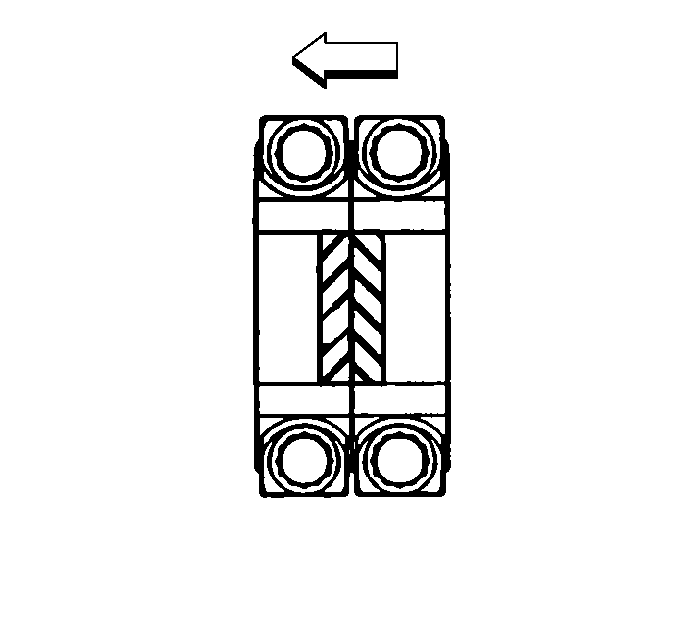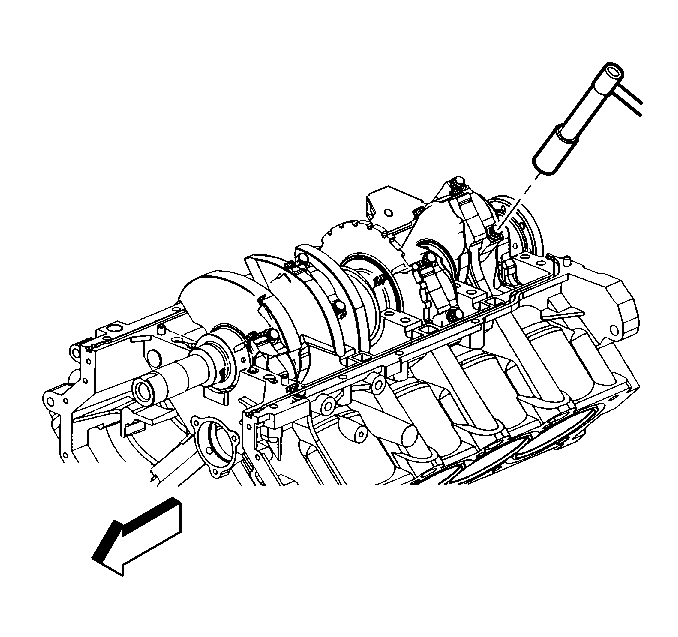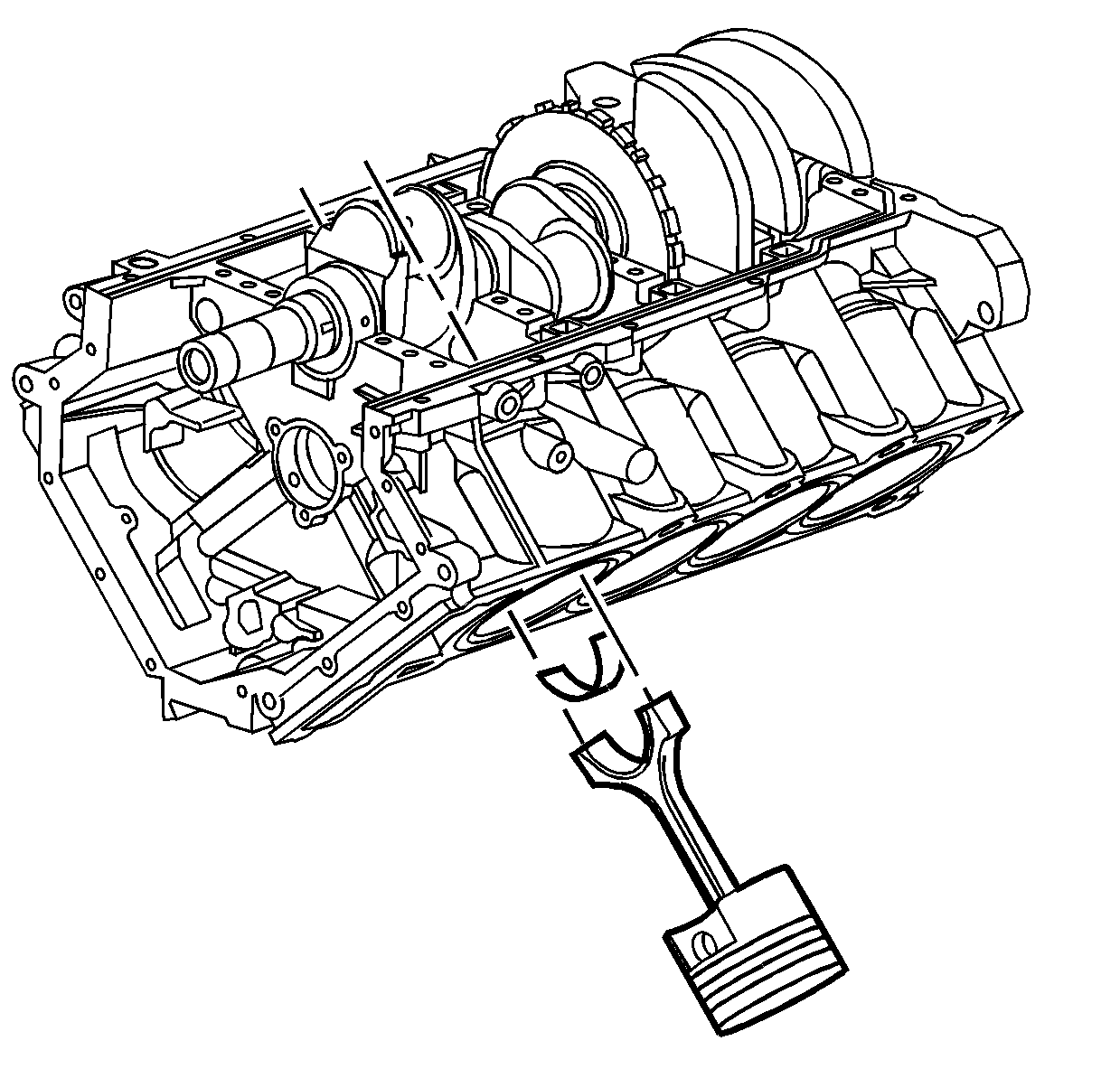For 1990-2009 cars only
- Note the orientation of paired connecting rods on each crankpin. The notches in the connecting rod cap must be facing each other.
- Before removing the connecting rods, check the connecting rod end play using the following procedure:
- Using a marker, number each piston face. Draw an arrow along the centerline of the piston pointing toward the front of the engine.
- Mark the cylinder number on the connecting rod and the connecting rod cap with scribe or marker. The connecting rod caps must remain with the original connecting rod.
- Remove the connecting rod bolts. Discard the bolts.
- Remove the connecting rod cap.
- Push the connecting rod and the piston assembly down through the top of the cylinder. Do not scratch the crankshaft journal or the cylinder wall when removing the connecting rod and the piston assembly.

| 2.1. | Tap the connecting rods to one end of the crankshaft journal using a dead-blow plastic or wooden hammer. |
| 2.2. | Using feeler gages, measure the clearance between the crankshaft counterweight and the connecting rod. |
| 2.3. | The connecting rod end play should not exceed 0.050 mm (0.020 in). |
| 2.4. | If the end play exceeds the specified limits, measure the width of the crankpin end of the connecting rod. |
| 2.5. | The width of the crankpin end of the connecting rod should be 21.745 - 21.805 mm (0.856 - 0.858 in). |
| 2.6. | If the connecting rod width is significantly smaller than specified and severe wear is present on the side of the connecting rod, replace the connecting rod. |
| 2.7. | If the connecting rod width is within specification and excessive scoring is present on the crankshaft journals, replace the crankshaft. |
Notice: Powdered metal connecting rods have rod bolts which yield when torqued. If the rod bolts are loosened or removed the rod bolts must be replaced. Rod bolts that are not replaced will not torque to the correct clamp load and can lead to serious engine damage.


